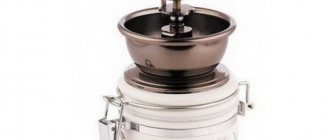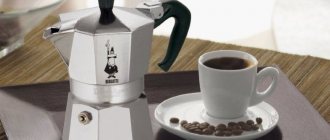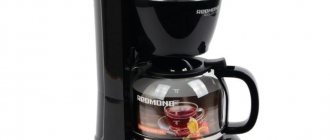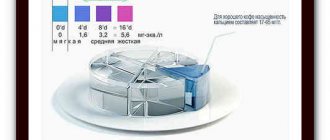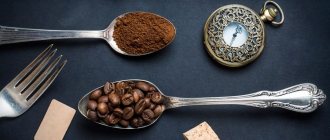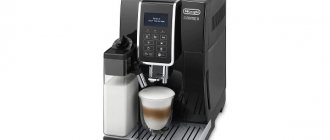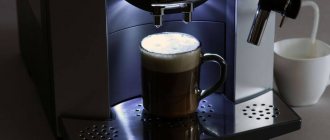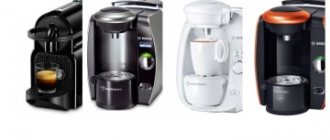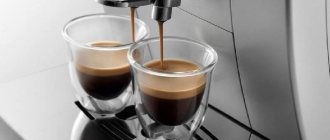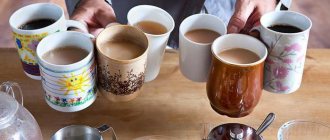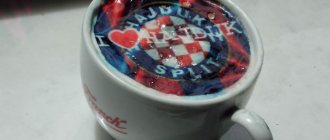Pourover, Hario, v60 - these are all names for the same method of making coffee. Pour over comes from the English pour over, literally translated as pouring from above. Hario - after the name of the Japanese company that produces accessories for this method. V60 - because the dripper funnel looks like the Latin letter V, and the angle between its walls is 60°.
The method became popular only in 2010, after the publication of an article about it in The New York Times, and was invented almost a hundred years before that. Preparing a pour-over is a real ritual, which is called a “coffee ceremony,” however, this ritual can be mastered quite easily, and its result will be unmistakably delicious.
Life hack: The Hario pourover, like the AeroPress, is very compact. Take it on the go and make crazy coffee wherever you are!
Enjoy your coffee!
And remember that there is always room for experimentation - try different grains, change the grind size, change the water temperature, or try putting a couple of ice cubes or frozen fruit slices in a cup, this will give the drink a special sweetness. Try an alternative recipe called Pour Over Coffee. Making coffee in the Hario V60 is similar to any other pour-over machine, such as a Chemex or Drip coffee maker, you will find their recipes in our articles.
What you need for the pour-over technique
First of all, you need to decide on the material from which the pourover is made. You can find ceramic, glass, and plastic options on sale. However, the funnel must retain heat for as long as possible, which is why ceramics are the most popular as a base for the device.
Plastic models are inexpensive. Food grade plastic is used in production. Such haryos are easy to carry - due to the lightness and strength of the material, the device is mobile.
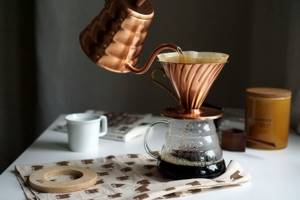
How to choose a filter
There are several types of filters for hario:
- metal - reusable;
- fabric or nylon - they are reusable, secured with a special holder;
- paper - disposable, available in three sizes. Before use, such filters need to be wetted, then the taste of the paper will not be transferred to the finished drink.
For home purposes, it is recommended to purchase fabric or metal filters; for a cafe, paper filters are perfect - they are convenient for quick disposal and there is no need to wash them every time.
Selecting a pour-over funnel
The classic funnel is considered to be the version from the manufacturer Hario in the V60 model. Outwardly, it looks like a regular cup with a handle, but there is also a hole in the bottom of the funnel. The accessory has a V-shape, and the walls are inclined at an angle of 60°. There are convex ribs on the walls inside.
Be sure to read: What water should you use in your coffee shop?
The company produces funnels in three sizes:
- 01 - for 1-2 cups.
- 02 - 4 cups.
- 03 - 6 cups.
The consumer can choose any option suitable for their purposes.
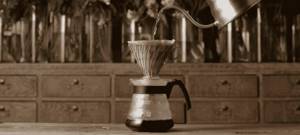
Which kettle is suitable for the pour-over method?
To prepare coffee in Hario, a stainless steel kettle is used. The shape of the spout in such a vessel should be curved - this ensures an even and long stream of water.
The modern market offers two options for a kettle in a hario: an electric one - in which the water heats up quickly enough, and a regular one, which does not need to be connected to a 220V network, suitable for different types of kitchen stoves.
Container for ready-made coffee
Hario is convenient because it can be placed over any container made of glass or ceramic; even an ordinary cup will do. However, the best option for brewing coffee using this technique is considered to be a glass jug with a long spout and markings - measuring divisions on the side.
How to make pour over coffee
To brew one cup in a pour over, you need to take 12 grams of coffee and 200 ml of water. Next, prepare the drink according to the instructions:
- Grind freshly roasted coffee beans.
- Place the filter in the pour over. If the filter is paper, you need to pour it with plenty of hot water - this way you can get rid of the paper taste and burn out the device at the same time.
- Drain the water from the cup, make sure that the filter is tightly fixed to the walls of the device.
- Pour coffee into the pour over and make a small depression in the top.
- Add a small amount of water to moisten the coffee. Water must be added carefully and smoothly so that it spreads evenly over the coffee without touching the edges. The water temperature should be 96°C.
- Time it. It will take no more than three minutes to prepare. After forty seconds, you can add a small amount of water.
- Add water slowly, moving from the center to the edge in a circle. The water level should be ¾ of the way to the top. At about the third minute, the water runs out.
- Remove the filter after the liquid has completely seeped into the cup.
Be sure to read: How to choose a coffee machine for a small, mobile or traditional coffee shop
The drink is ready, you can enjoy the delicate taste of coffee brewed in a pour-over.
Dishes for pour over
The required set of items includes:
Funnel
The funnel or dripper is the main item for the brewing procedure. It has a special fastening at the bottom so that it can be placed on a cup or coffee brewing flask. Such funnels are produced by the Japanese company Hario , which specializes in creating coffee utensils.
Drippers can be of different sizes; the most common one is marked 02. It is suitable for both cups and special brewing flasks, which are also included in the company’s product range.
The material used to make funnels also determines their price. The cheapest are plastic options. They cost from 650 rubles. Ceramic ones are more expensive, their price starts from 2200 rubles per piece. They are considered to be better because they are made from natural material. Plastic ones have their advantage - they are more durable and are suitable as a trial option to evaluate the effect of this method of preparing a drink.
Convex marking lines are applied to the inside of all funnels. Hot water flows down them, providing better extraction of ground grain. The Japanese claim that this is their know-how, which helps to achieve better results in brewing.
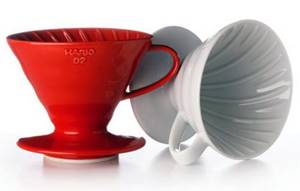
Kettle
A pour-over kettle greatly simplifies the process of properly brewing coffee. The teapot has an important feature - a long, thin, curved spout. Water flows through it with the required pressure and pressure, the stream is smooth, thin and uniform. At the same time, the small diameter of the spout prevents water from flowing too quickly. The Japanese claim that the parameters of the spout are calculated by engineers specifically to ensure ideal spill characteristics. Let's leave this statement to the conscience of the manufacturer, we will only note that using such a kettle, brewing coffee is indeed much easier and the result is always decent.
Pour-over kettles also have their differences. They come in different sizes and designs, and can be electric or designed to be heated on a regular stove. The cost of a regular 1.2-liter kettle is about 4 thousand rubles. An electric one, which will help boil 800 ml of water, will cost 9.5 thousand rubles.
In order to get ideal water for a coffee ceremony, you do not need to boil it, but turn it off immediately after the first springs appear. Then the brewing result will be especially good.
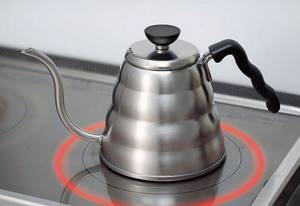
Serving kettle
It is made of ceramics, but more often, of glass, so that the entire process of making the drink can be observed. A branded serving teapot, produced specifically for pourover, may have a special fastening ring for the funnel. A glass version of this device, in which you can prepare up to 6 servings of the drink, will cost from 2,400 rubles.
It is convenient, but not a required item. The most ordinary cup can successfully fulfill its role.
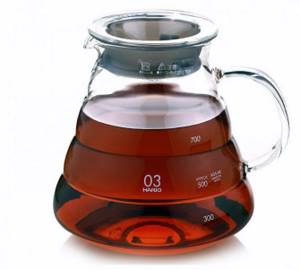
Filter packages
They should be made of multi-layer paper to withstand pressure and heat well. Branded pour over bags are sold in packs of 40 and 100 pieces. The most economical are the latter, they will cost approximately 600 rubles per package.
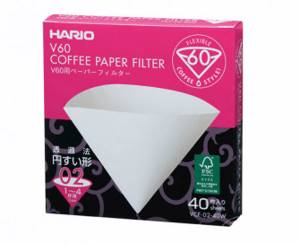
Dishes for pour over are also sold in sets. The cost of the basic set is from 4,000 rubles. It includes a serving kettle, a plastic funnel, a set of filters and a coffee measuring spoon. This set is often purchased as a gift.
Electric pour over coffee maker
Not long ago, information appeared that one of the companies released an electric pour-over coffee maker that prepares coffee according to the Japanese method.
There is only one brand of pour over coffee maker, KitchenAid . Brand and country of origin: USA.
Photo of pour over coffee maker KitchenAid 5KCM0802EOB
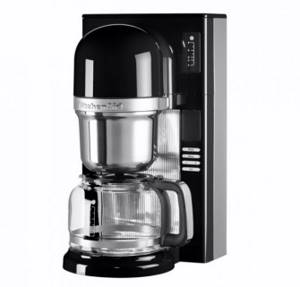
They slightly changed the principle of drip coffee makers. In the device, water is supplied through the coffee in a continuous stream, the thickness and flow rate of which is controlled electronically. All processes are fully automated, right down to filter washing and container heating. The supply water temperature is 93°C. The manufacturer managed to develop an electronic device that reliably repeats all the processes of manual brewing using the pour-over method. Cost - about 25 thousand rubles.
This coffee maker is not yet very widespread among Russian consumers, and there are no real reviews about the quality of the finished drink.
The healthiest and safest method of making coffee has been revealed
“Coffee is for snobs,” say lovers of rich, buttery espresso or strong oriental coffee. “But this method best reveals the natural fruity and floral notes of good coffee,” lovers of the alternative will object.
And, as Norwegian scientists recently found out, it is much more beneficial for health than coffee prepared “classically”. What recipe are we talking about?
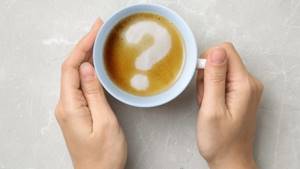
Proven by scientists
At the end of April, the results of a large-scale multi-year study of Norwegians were published in the European Journal of Preventive Cardiology. For 18 years they studied the effect of coffee prepared in different ways on human health. In addition to coffee preferences, the scientists took into account nicotine consumption, general body condition and the level of physical activity of the experiment participants. And, please note, more than 635 thousand people aged from 20 to 79 took part in it.
In the end, it turned out this: coffee prepared by pouring hot water through a filter (that is, through a “funnel”) is not only the most harmless, but also healthy. Analysis of statistics showed that drinking 1-4 cups of filter coffee reduces the risk of mortality from cardiovascular diseases.
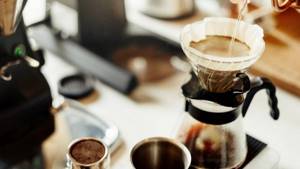
But espresso, its derivatives, and coffee prepared in cezve and French press contain a large amount of diterpenes, which increase the level of “bad” cholesterol. This, in turn, provokes liver and kidney diseases, heart attacks and Alzheimer's disease.
Funnel, pour-over or hario - is there a difference?
No difference. Pour over (from the English pour over - “pouring from above”) is the general name for a method in which burning water is poured through a funnel with a filter filled with ground coffee. “Funnel” is the usual Russian name for the method.
Sometimes this method of preparing filtered coffee is called “Hario”, after the name of the world’s most famous manufacturer of pourovers - the Japanese company Hario, or V60 - in honor of the iconic Hario V60 funnel.
Funnels are made of glass, metal, ceramics and plastic. At competitions, baristas usually use ceramic ones (it’s beautiful!), but plastic ones are considered optimal because they absorb and release heat more slowly.
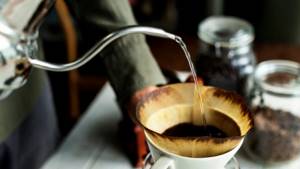
How to make coffee in pour over?
Pour over is not the easiest way to make coffee, and requires the barista to have at least a little experience and a special conical dripper funnel, paper filters, kitchen scales and a timer. In addition, you will need a kettle (professionals use a pour-over kettle with an elongated thin spout, but at home any kettle that maintains the temperature of hot water well) and a vessel for the finished coffee (you can use another kettle).
The process itself consists of several stages:
1. Pre-wetting or "blooming".
Coffee is moistened with 30-40 ml. hot water for at least 30 seconds. This is how the extraction and release of carbon dioxide begins. If you skip this stage, the finished drink will be watery.
2. Topping up.
Slowly pour water over 2 minutes, making circular movements with the kettle. You can either do this non-stop in one go, or in 4 intervals of 25 seconds each. As shown in the video below.
Helpful tips for funnel coffee lovers
Coffee with pronounced fruit and berry notes is ideal for pour over: for example, Salvador Pacamara. The grind should be a little coarser than medium – but not as coarse as for a French press. It is better to take a medium or light roast; dark is categorically not recommended by professionals.
The ideal ratio of coffee to water is 1:14 or 1:15 (about 7 grams of coffee per 100 ml of water), but if you like not very strong coffee, you can increase the proportions to 1:20.
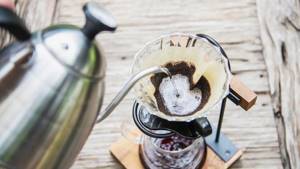
Before placing coffee in a paper filter, it is better to pour 150-200 ml through it. hot water. This will get rid of the paper taste in the finished drink, warm up the vessel into which the coffee will be poured, and ensure a tight fit of the filter.
What should those who do not have special equipment for making pour-over coffee do? The simplest answer is to buy it. But if you are afraid of throwing money away, but you want to try it throughout this entire article, take a closer look at coffee sachets from the Coffesso brand. You will get a drink that tastes as close as possible.
